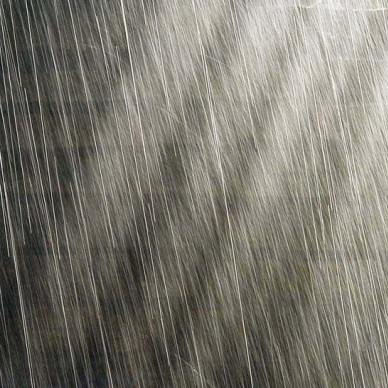Redditors react to a video of a bike ride around Pyongyang
Video: the most normal city ever filmed
Redditors: So spooky! Everything looks… wrong! This guy is taking his life in his hands to film this!
Also Redditors: Looks too normal, this has to be staged, they’re actors and this is a propaganda channel!
Side note: my tolerance for western bullshit on the DPRK has reached the negatives, five seconds in these comments and you can cook an egg with my blood. Salute to the small handful of brave comrades pushing back on propaganda in the replies 




I am reposting (and expanded on) my comment from another thread because I see so much misinformation about North Korea.
I think people have seriously underestimated North Korea.
Let me remind you that in the 1960s, North Korea and Japan were the two Asian economies that mattered! North Korean GDP per capita in the 1960s was higher than the GDP per capita of China and South Korea.
When Japan colonized Korea, they divided the country into the North and the South regions, with the North prioritized on industrialization (concentrated mostly in North Hamgyong, South Hamgyong and Pyongyang) while the South focused on agriculture. After Japan surrendered, the Chinese Civil War ensued. Mao was so adamant about capturing the Northeast province of China (Manchuria), where the Japanese heavy industries were situated, that he was willing to give up all the bases across China just to get to the Northeast. After the Chinese communists controlled the Northeast, much of their industrial and mechanized supplies came from the industrial base of North Korea.
North Korea in the 1960s to the 1980s was a confident, industrialized nation. South Korea did not overtake the North until after the mid-1970s.
The post-Korean War rebound after being bombed by the Americans was real. East German media in the 1960s called North Korea an “economic miracle of the Far East” and compared favorably with post-war Japan’s reconstruction.
By the late 1960s, North Korean rural villages were fully electrified.
(Let me give you some perspective here: the per capita electric consumption in the 1960s was 5 times that of China’s! The first Chinese province to be fully electrified was Shandong province in 1996, and nationwide electrification was only achieved in 2015 - the last province being Qingdao)
By the late 1970s, North Korea achieved food self-sufficency, and realized free education and healthcare for all its people.
By the late 1980s, 70% of North Korean agriculture was fully mechanized.
In the 70s, North Korea produced 6 million ton of grain annually. By 1984, it broke a record of 10 million ton of grain production! In case this was not clear, they almost doubled their food production in just over a decade!
The North Koreans built the Nampo Dam (West Sea Barrage) in just 5 years, from 1981 to 1986, with a cost of $4 BILLION dollars. An impressive feat of engineering, and they were so confident and proud of themselves that they proclaimed the West Sea Barrage as the “8th Wonder of the World”.
The West Sea Barrage was built was to prevent the intrusion of seawater caused by the tidal floods of the Yellow Sea into the Taedong river. The salinity of the water supply has always caused issues for irrigation of the farmlands, and a dam that blocks the intrusion of seawater was critical to supply fresh water for their farming activities (the Nampo Dam itself is a reservoir that stores up to several billion cubic meters of fresh water).
Why is this important? And where did it all go wrong?
Well, we have to understand the problem with the Korean peninsula. The North in particularly is cursed with mountainous regions, with only less than 25% of its land flat enough and suitable for large scale agriculture.
Fun fact: Pyongyang (平壤) literally means “flat land”. Imagine a country with such mountainous terrain that they named that one place “the flat land”.
Food self-sufficiency is an inherent problem for North Korea. This is a problem for the South as well, but to a lesser extent, and they chose to industrialize and use their export earnings to import food. For the North Koreans, they chose to tackle this critical issue head on. As such, as the DPRK achieved their industrialization goals of the Chollima Movement (the “thousand-li horse movement”) by the 1960s, they began to turn to resolve their food insecurity problem.
With so little area for agriculture, the North Koreans began to clear the forests of the mountainous areas to implement terrace farming. This large scale deforestation would lead to severe consequences later as the soil erosion from such steep angled terrains (really cursed place) resulted in the loss of fertile soil and serious degradation of agricultural output decades later.
At the same time, owing to their industrial base and with the support from the USSR and PRC (the DPRK maintained a fine balance in its relationship with both countries after the Sino-Soviet split), they began to implement mechanization of their agricultural economy. Farming output shot through the roof, reaching 10 million ton of grain production by 1984.
However, there are severe issues that accompanied such rapid development. Apart from the deforestation of the steep terrain that caused ecological issues and loss of fertile soil, North Korea itself does not have energy self-sufficiency. Its farming activities were highly mechanized, which means that it needs to consume a huge quantity of fossil fuel to sustain the agricultural production. North Korean economy thus became over-dependent on fossil fuel, which it doesn’t produce itself. (They did have coal mining but you can’t use them to power mechanized equipments.) This was not a problem when the USSR was able to provide ample supply of cheap oil to the DPRK, however as the USSR became entangled in the war in Afghanistan and the Middle East in the 1980s, its dwindling economy could no longer support the North Korean economy as it used to.
Following the collapse of the USSR in the 1990s, fuel export to North Korea plummeted, and the North Koreans soon found themselves in a crisis of energy shortage. Trade plummeted from 53% with the USSR to merely 3% with Russia in 1995. By that time, food production had already substantially fallen and the DPRK fell back to food insecurity once again, and never recovered from that. Food and energy crisis both at once is the bane of any industrialized society.
Famine ensued in the 1990s (the March of Suffering). The series of floods in 1995 was particularly bad, exacerbated by the deforestation decades earlier, and caused much destruction to their arable lands, mining industries, and various economic infrastructures. The UN estimated the cost of destruction to be at $15 billion.
There have always been questions and debates about whether the DPRK had over-invested in their agricultural policy. The West Sea Barrage was a huge undertaking and financial investment, costing $4 billion dollars. You can clearly tell that their motives were obviously heavily influenced by the socialist mentality of “man will overcome nature”, but perhaps sometimes the conditions simply weren’t there, especially in such a cursed place as the Korean peninsula. South Korea avoided this problem by largely focusing on the manufacturing sector and turned to importing food instead (agriculture comprised only 2% of South Korea’s GDP, but it never went below 20% for North Korea). I don’t have a good answer but it is certainly an interesting part of history that should be examined deeper.
How did you learn all of this if I may ask? Do you have any recommendations on literature or learning resources that aren’t just anti-DPRK propaganda?
I remember coming across some Chinese article years ago talking about the North Korean economy and actually went back and dug up more information about it.
In other words, it’s easier if you know Chinese, but even then not all information is accurate and some are quite sensational.
Gimme l’article… gimmeeeeeee… (Idc if it’s Putonghua)
Here’s a couple to start:
http://pdf.dfcfw.com/pdf/H3_AP201810081209197493_1.PDF (Macro research on the DPRK economy from a Chinese investment firm)
https://www.essra.org.cn/view-1000-3081.aspx (Research into the DPRK economic structure and development)
Tysm…